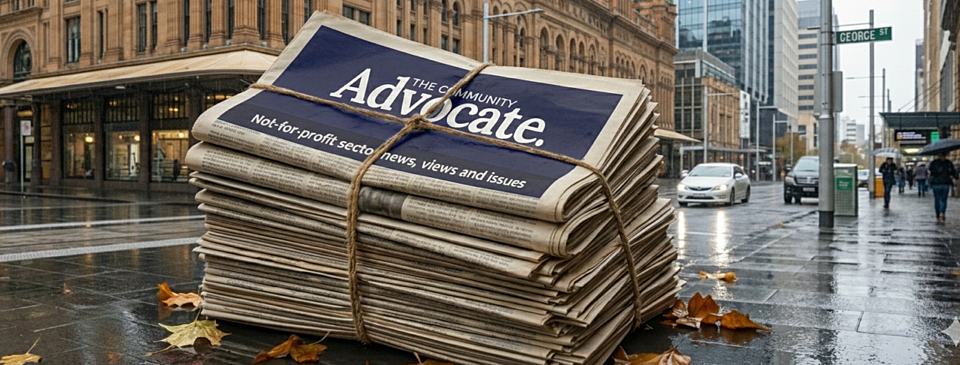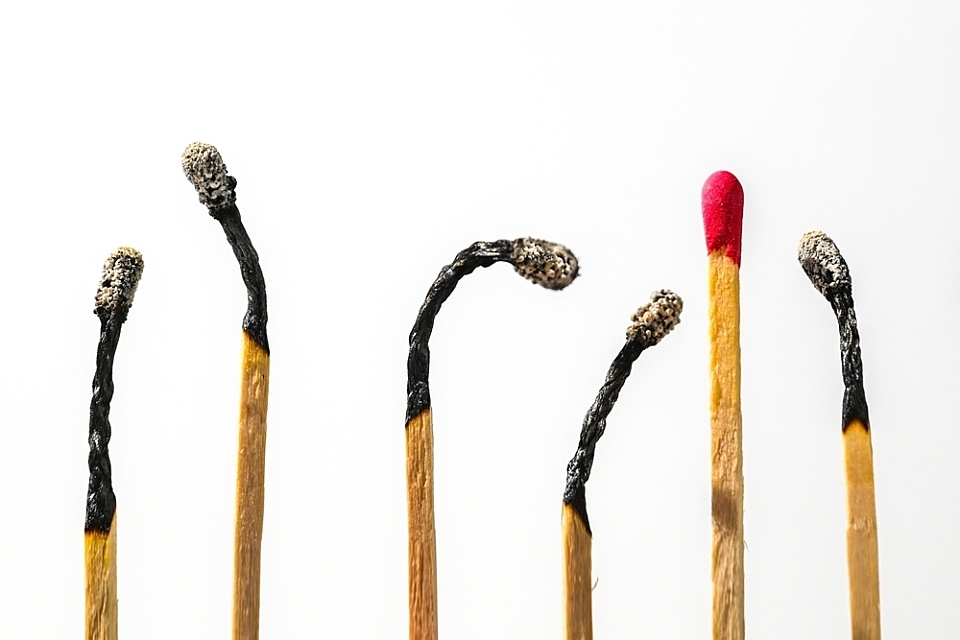
William Tilmouth wins Australia’s highest human rights award and condemns continuing Indigenous policies
Posted on 17 Dec 2025
The founding chair of the ambitious systems-change not-for-profit organisation Children’s Ground,…
Posted on 30 Jan 2024
By Greg Thom, journalist, Institute of Community Directors Australia

Australians doing it tough amid the cost-of-living crisis are still generous at heart and instinctively support charitable giving, according to a key figure in the Productivity Commission’s inquiry into philanthropy.
Assistant Productivity Commissioner Krystian Seibert said research indicated that when people have their backs against the wall in tough economic times, they still want to help others if they can.
“When things don’t sort of work out for people in the community, charities are often the only ones there to support and help them.
“So perhaps when people experience their own challenges or difficulties, it makes them understand the role and importance of charities in the community, even if they themselves don’t need to use them.”
In a wide-ranging interview on the Humans of Purpose podcast, Mr Seibert shared his views on:
Mr Seibert said while donations to charity have risen to more than $13 billion according to the most recent Australian Charities and Not-for-profits Commission data, the number of individual donors has declined.
One of the most noticeable trends in the sector, however, has been a blurring of the lines between for-profit businesses, charities and not-for-profits.
“Once upon a time you had business, charities and NFPs and they kind of all stuck to their lanes,” said Mr Seibert.

Whereas businesses may have once used some of their profits from goods or services to invest in philanthropy, having a well-defined social purpose has become increasingly important.
“Businesses are for-profit, but they can also have a social purpose,” said Mr Seibert.
“They [now] consciously think about their responsibilities to stakeholders more broadly, not just their customers but ‘what does the wider community think about us’.
“They’re more conscious about their social licence to operate.”
Mr Seibert’s comments come as digital imaging company Canon announced a corporate social responsibility partnership with children’s education charity The Smith Family.
As part of the three-year partnership, Canon Oceania will invest $50,000 a year to support the education of 75 disadvantaged students as part of The Smith Family’s Learning for Life program.
Canon employees will be able to volunteer to participate in activities run by The Smith Family, such as its iTrack mentoring program.
The Smith Family CEO Doug Taylor said the partnership would make a lasting difference in the education of young Australians.
“It will also provide us with greater opportunities to create awareness of the impact of poverty on educational outcomes across the nation.”
Mr Seibert said much of the change in companies’ attitude toward their social licence to operate was being driven by the evolving expectations of customers, who want to shop or engage with companies that align with their personal values.
“I think societal expectations are changing and so business is changing too.”
“You’ve got NFPs and charities that are having to basically adopt a very business-like approach towards what they do.”
Blurred lines
Mr Seibert said the giving landscape was further complicated by a blurring of the lines not only between businesses and social enterprises, but between charities and not-for-profits.
“You’ve got NFPs and charities that are having to basically adopt a very business-like approach towards what they do,” he said.
“The challenge, I think, can be how they blend their not-for-profit or charity ethos, their values, their purpose, and make that distinct whilst operating in a market with for-profits as well.”
The federal government directed the Productivity Commission to investigate philanthropy as part of its commitment to doubling charitable giving by 2030.
Commencing in February 2023, the inquiry received 270 submissions and conducted more than 100 meetings with stakeholders, ranging from volunteers to government bodies and individual donors, before handing down its draft report in November.
The commission has now invited feedback on a raft of proposed reforms by February 9.
Mr Seibert said he and his fellow commissioners had made a concerted effort to engage with Aboriginal and Torress Strait Islander people and organisations as part of their inquiry in a bid to “try and ensure that we centre our thinking in their stories, experiences and perspectives on philanthropy.
“Aboriginal and Torres Strait Islander communities in Australia have practised traditions of altruism, generosity, reciprocity for tens of thousands of years.
“They also engage with philanthropy as well when seeking to further their own objectives and ambitions for their community.”

Breaking the starvation cycle
Mr Seibert urged potential donors not to focus on what charities spend to run their organisations.
“The percentage that a charity spends on administration or overhead costs are actually really inaccurate measures of the effectiveness of performance and we point that out in the draft report,” said Mr Seibert.
His comments come after a Sydney Morning Herald investigation (paywalled) alleged the Kids with Cancer Foundation passed on just 23% of the $56 million in donations it received in a nine-year period to those in need.
Analysis of the foundation’s financial documents showed the charity spent less than 10 per cent of donations directly on families and hospitals in 2021.
This was despite the Kids with Cancer Foundation website stating that 100% of all donations go towards supporting children with cancer and their families.
While not commenting on the Kids with Cancer Foundation story, Mr Seibert said that if charities fell victim to the “starvation cycle” – underinvesting in key capabilities because of community or donor expectations – it would be harder for them to have an impact.
“When people donate to a charity and they want to spend nothing on administration and overheads, which would involve just taking the money that’s been donated and putting it in a bucket and leaving it on the side of the road for anyone to take,” said Mr Seibert.
“[That would result in] very low overheads and expenses, but you need to employ people, you need to let people deliver the services, work with the community, take that money and turn it into something that actually benefits the community.”
Philanthropy report highlights sector concerns
Comment: Australia’s philanthropic review suffers from a colossal blind spot

Posted on 17 Dec 2025
The founding chair of the ambitious systems-change not-for-profit organisation Children’s Ground,…

Posted on 17 Dec 2025
As we head into the holiday period, the number of Australians battling homelessness has hit crisis…

Posted on 17 Dec 2025
Posturing by the US president about Europe's immigration policies, even warnings of future…

Posted on 17 Dec 2025
For this final Community Advocate edition of the year, we reviewed a whole year’s worth of stories…

Posted on 16 Dec 2025
Lex Lynch spent more than two decades in the climate change and renewables field before last year…

Posted on 16 Dec 2025
As Australia prepares to welcome its one millionth refugee, human rights advocate and former…

Posted on 11 Dec 2025
Community Directors trainer Jon Staley knows from first-hand experience the cost of ignoring…

Posted on 10 Dec 2025
Adele Stowe-Lindner, Executive Director, Community Directors The Institute of Community Directors…

Posted on 10 Dec 2025
The Australia Institute has called on the federal government to force Australian businesses to be…

Posted on 10 Dec 2025
Economic empowerment is essential to enabling recovery, restoring agency and preventing future…
Posted on 10 Dec 2025
A long-time advocate for rough sleepers in northern New South Wales has been named her state’s…

Posted on 10 Dec 2025
What a year 2025 has been, particularly at a national level where the Parliament and politics as we…